-
 Bitcoin
Bitcoin $105,953.9980
3.06% -
 Ethereum
Ethereum $2,445.3292
6.68% -
 Tether USDt
Tether USDt $1.0006
-0.03% -
 XRP
XRP $2.1968
7.03% -
 BNB
BNB $643.2903
2.13% -
 Solana
Solana $144.2799
3.82% -
 USDC
USDC $1.0000
-0.03% -
 TRON
TRON $0.2739
0.49% -
 Dogecoin
Dogecoin $0.1642
4.47% -
 Cardano
Cardano $0.5834
5.49% -
 Hyperliquid
Hyperliquid $38.0741
2.80% -
 Sui
Sui $2.7741
7.56% -
 Chainlink
Chainlink $13.4107
11.26% -
 Bitcoin Cash
Bitcoin Cash $450.4828
-0.61% -
 UNUS SED LEO
UNUS SED LEO $9.1301
0.64% -
 Stellar
Stellar $0.2476
5.49% -
 Avalanche
Avalanche $18.0637
5.09% -
 Toncoin
Toncoin $2.9066
2.43% -
 Shiba Inu
Shiba Inu $0.0...01160
4.01% -
 Hedera
Hedera $0.1527
8.00% -
 Litecoin
Litecoin $84.6122
2.37% -
 Monero
Monero $317.6076
5.76% -
 Ethena USDe
Ethena USDe $1.0008
0.02% -
 Polkadot
Polkadot $3.4519
5.27% -
 Dai
Dai $1.0000
-0.03% -
 Bitget Token
Bitget Token $4.2835
5.62% -
 Uniswap
Uniswap $7.0443
9.78% -
 Pepe
Pepe $0.0...09964
7.41% -
 Pi
Pi $0.5391
4.64% -
 Aave
Aave $264.1743
11.26%
What is the data storage method of blockchain? Does it take up a lot of space?
Blockchain data storage uses blocks to record transactions, ensuring security and transparency, but can take up significant space, with Bitcoin requiring about 300 GB.
Apr 28, 2025 at 01:28 am
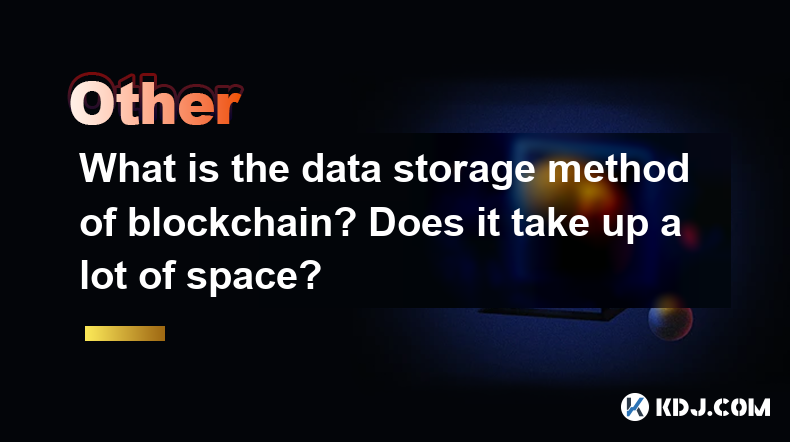
The blockchain technology has revolutionized the way data is stored and managed within the cryptocurrency ecosystem. At its core, blockchain is a decentralized and distributed ledger that records transactions across multiple computers, ensuring transparency and security. This article will delve into the data storage method of blockchain, exploring how it works and whether it consumes a significant amount of space.
What is Blockchain Data Storage?
Blockchain data storage involves the use of blocks to store transactional data. Each block contains a list of transactions, a timestamp, and a cryptographic hash of the previous block, forming a chain of blocks. This structure ensures that once data is recorded, it cannot be altered without changing all subsequent blocks, which would require consensus from the majority of the network.
How Does Blockchain Store Data?
The process of storing data on a blockchain involves several key steps:
- Transaction Initiation: When a user initiates a transaction, it is broadcast to the network.
- Verification: Nodes on the network verify the transaction using consensus algorithms.
- Block Creation: Verified transactions are grouped into a block.
- Mining/Validation: Miners or validators compete to add the block to the blockchain, often through solving complex mathematical problems.
- Adding to the Chain: Once a block is added, it becomes a permanent part of the blockchain.
This process ensures that all participants have a copy of the entire blockchain, maintaining its decentralized nature.
Types of Blockchain Storage
There are primarily two types of blockchain storage methods: on-chain storage and off-chain storage.
- On-Chain Storage: This method involves storing all data directly on the blockchain. It offers high security and immutability but can be space-intensive.
- Off-Chain Storage: This approach stores data outside the blockchain, with only references or hashes stored on the blockchain. It is more scalable and less space-consuming but may compromise some security aspects.
Does Blockchain Take Up a Lot of Space?
The amount of space blockchain takes up can vary significantly depending on the type of blockchain and its storage method.
- Bitcoin Blockchain: The Bitcoin blockchain, for instance, currently takes up approximately 300 GB of space. This size grows over time as more transactions are added.
- Ethereum Blockchain: The Ethereum blockchain, on the other hand, is around 1 TB in size, due to its more complex smart contract functionality.
These sizes are significant, especially for individual users who need to store the entire blockchain to participate in the network. However, solutions like pruned nodes and light clients exist to mitigate this issue.
Pruned Nodes and Light Clients
To address the issue of large storage requirements, blockchain networks have developed alternatives to full nodes.
- Pruned Nodes: These nodes store only the most recent blocks and discard older ones, significantly reducing the space needed. For example, a pruned Bitcoin node might only require 5 GB of storage.
- Light Clients: These clients do not store the entire blockchain but instead rely on full nodes for data. They are much lighter in terms of storage, typically requiring just a few hundred megabytes.
Scalability Solutions and Storage
Blockchain networks are also exploring various scalability solutions to reduce the burden of storage:
- Sharding: This technique splits the blockchain into smaller pieces called shards, each processing a subset of transactions. This can reduce the storage requirements for individual nodes.
- Layer 2 Solutions: Technologies like the Lightning Network for Bitcoin and sidechains for Ethereum allow transactions to be processed off the main blockchain, reducing the data stored on-chain.
Practical Considerations for Users
For users interested in participating in a blockchain network, understanding the storage requirements is crucial. Here are some practical steps to manage blockchain storage:
- Choose the Right Client: Depending on your needs, you might opt for a full node, a pruned node, or a light client. Full nodes offer the most security but require the most space.
- Regular Maintenance: Regularly update your node software and consider pruning older data if you are running a full node.
- External Storage: Use external hard drives or cloud storage solutions to store the blockchain data if your local storage is limited.
Frequently Asked Questions
Q: Can I run a blockchain node on a regular computer?
A: Yes, you can run a blockchain node on a regular computer, but the storage requirements can be significant. For Bitcoin, you would need at least 300 GB of free space for a full node, though pruned nodes and light clients can run on less demanding hardware.
Q: How often does the blockchain data need to be updated?
A: Blockchain data needs to be updated regularly to stay current with the network. For Bitcoin, new blocks are added approximately every 10 minutes, so you would need to sync your node at least this often to stay up-to-date.
Q: Is it possible to recover data from a blockchain if it is lost?
A: Yes, data on a blockchain is replicated across multiple nodes, so if your local copy is lost, you can resync with the network to recover the data. However, this process can be time-consuming and requires significant bandwidth.
Q: Are there any privacy concerns with blockchain data storage?
A: Yes, since blockchain data is public and immutable, there can be privacy concerns. While the data is encrypted, the transparency of the ledger can potentially reveal transaction patterns. Some blockchains offer privacy features, such as zero-knowledge proofs, to mitigate these concerns.
Disclaimer:info@kdj.com
The information provided is not trading advice. kdj.com does not assume any responsibility for any investments made based on the information provided in this article. Cryptocurrencies are highly volatile and it is highly recommended that you invest with caution after thorough research!
If you believe that the content used on this website infringes your copyright, please contact us immediately (info@kdj.com) and we will delete it promptly.
- Stablecoins, Blockchain Games, and NxtNexus: A Deep Dive
- 2025-06-25 10:25:13
- Children: Yesterday, Today, and Tomorrow's Promise
- 2025-06-25 10:45:13
- £1 Coin: Valuable Finds and Expert Tips for Collectors
- 2025-06-25 11:05:13
- XRP, Ripple, Legal Saga: Navigating Uncertainty with Stablecoin Strategies
- 2025-06-25 10:52:16
- Dogwifhat (WIF) Price Prediction: Will the Hat Stay On?
- 2025-06-25 10:55:12
- Crypto Liquidations Plummet: Time to Buy Today?
- 2025-06-25 08:25:12
Related knowledge
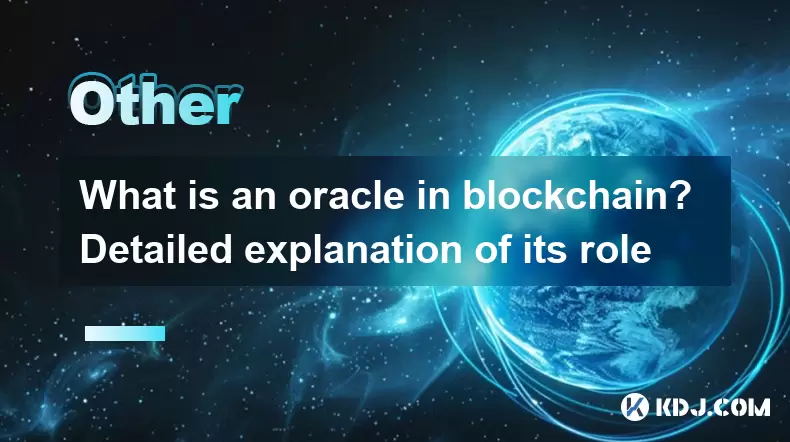
What is an oracle in blockchain? Detailed explanation of its role
Jun 21,2025 at 06:14am
Understanding the Concept of an Oracle in BlockchainIn the realm of blockchain technology, an oracle is a trusted third-party service that connects smart contracts with real-world data. Smart contracts are self-executing agreements where the terms are written directly into code and run on a blockchain network. However, these contracts operate in a close...
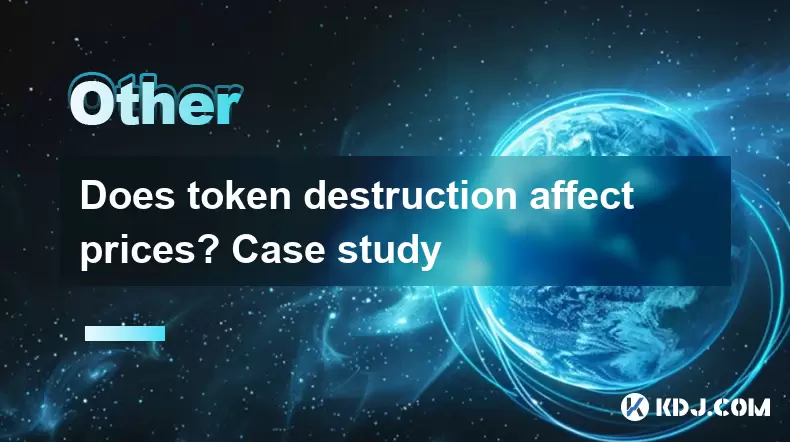
Does token destruction affect prices? Case study
Jun 22,2025 at 02:50am
Understanding Token DestructionToken destruction, commonly referred to as token burning, is a process where a portion of cryptocurrency tokens is permanently removed from circulation. This is typically done by sending the tokens to a non-recoverable wallet address, effectively reducing the total supply. Projects may implement token burns to create scarc...
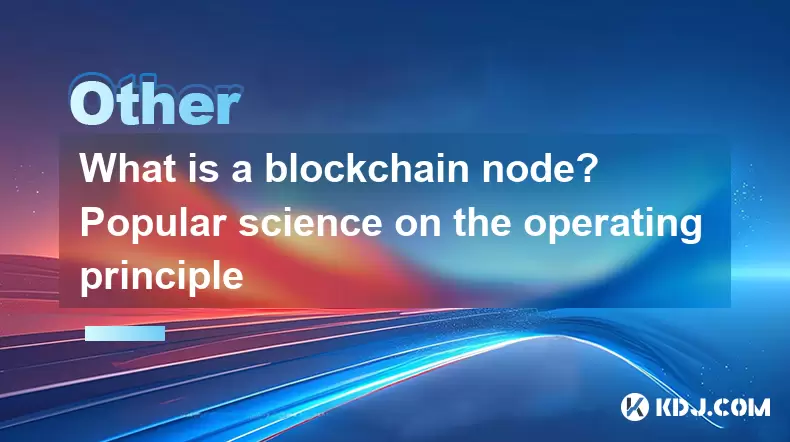
What is a blockchain node? Popular science on the operating principle
Jun 22,2025 at 11:00pm
Understanding the Basics of a Blockchain NodeA blockchain node is essentially a computer connected to a blockchain network that participates in validating and storing transaction data. Each node plays a critical role in maintaining the integrity, transparency, and decentralization of the blockchain. Unlike traditional centralized systems where a single ...
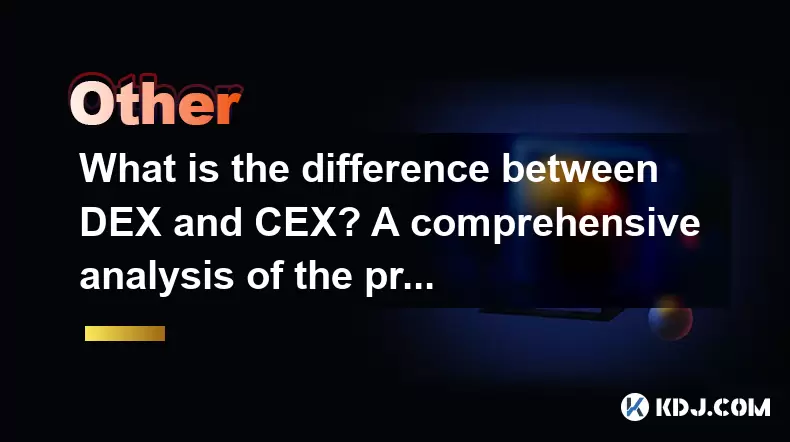
What is the difference between DEX and CEX? A comprehensive analysis of the pros and cons
Jun 24,2025 at 09:42am
What is a DEX (Decentralized Exchange)?A DEX, or Decentralized Exchange, operates without a central authority. Unlike traditional platforms, DEXs allow users to trade cryptocurrencies directly from their wallets. These exchanges rely on smart contracts to facilitate transactions, ensuring that no intermediary holds user funds. One of the most notable fe...
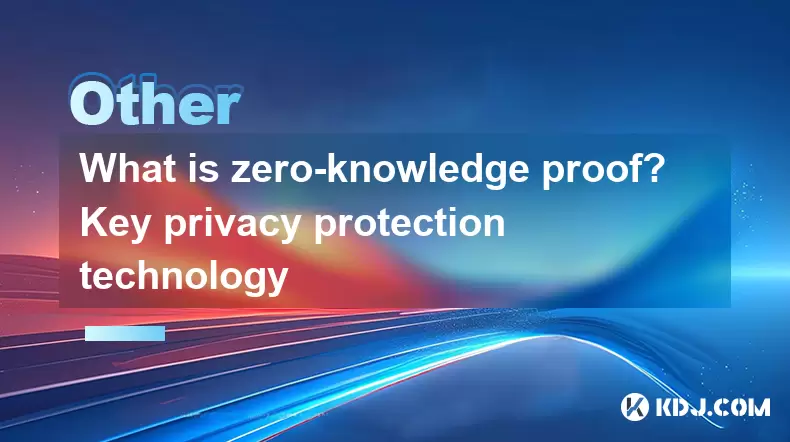
What is zero-knowledge proof? Key privacy protection technology
Jun 22,2025 at 07:29pm
Understanding Zero-Knowledge ProofZero-knowledge proof (ZKP) is a cryptographic method that allows one party to prove to another party that they know a value or information without revealing the actual content of that information. This concept is particularly important in the realm of privacy protection technologies, especially within blockchain and cry...
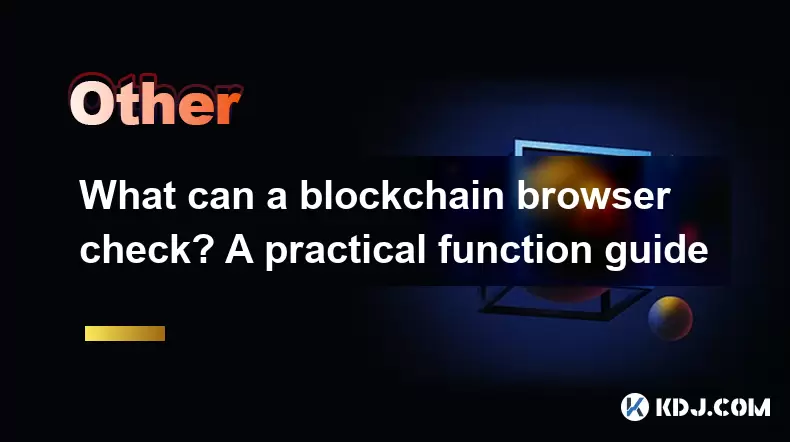
What can a blockchain browser check? A practical function guide
Jun 20,2025 at 07:35pm
Understanding the Role of a Blockchain BrowserA blockchain browser serves as a powerful tool for anyone interacting with blockchain networks. It allows users to explore, verify, and analyze data stored on the blockchain in real time. Unlike traditional ledgers or databases that are centralized, blockchains are decentralized and publicly accessible. This...

What is an oracle in blockchain? Detailed explanation of its role
Jun 21,2025 at 06:14am
Understanding the Concept of an Oracle in BlockchainIn the realm of blockchain technology, an oracle is a trusted third-party service that connects smart contracts with real-world data. Smart contracts are self-executing agreements where the terms are written directly into code and run on a blockchain network. However, these contracts operate in a close...

Does token destruction affect prices? Case study
Jun 22,2025 at 02:50am
Understanding Token DestructionToken destruction, commonly referred to as token burning, is a process where a portion of cryptocurrency tokens is permanently removed from circulation. This is typically done by sending the tokens to a non-recoverable wallet address, effectively reducing the total supply. Projects may implement token burns to create scarc...

What is a blockchain node? Popular science on the operating principle
Jun 22,2025 at 11:00pm
Understanding the Basics of a Blockchain NodeA blockchain node is essentially a computer connected to a blockchain network that participates in validating and storing transaction data. Each node plays a critical role in maintaining the integrity, transparency, and decentralization of the blockchain. Unlike traditional centralized systems where a single ...

What is the difference between DEX and CEX? A comprehensive analysis of the pros and cons
Jun 24,2025 at 09:42am
What is a DEX (Decentralized Exchange)?A DEX, or Decentralized Exchange, operates without a central authority. Unlike traditional platforms, DEXs allow users to trade cryptocurrencies directly from their wallets. These exchanges rely on smart contracts to facilitate transactions, ensuring that no intermediary holds user funds. One of the most notable fe...

What is zero-knowledge proof? Key privacy protection technology
Jun 22,2025 at 07:29pm
Understanding Zero-Knowledge ProofZero-knowledge proof (ZKP) is a cryptographic method that allows one party to prove to another party that they know a value or information without revealing the actual content of that information. This concept is particularly important in the realm of privacy protection technologies, especially within blockchain and cry...

What can a blockchain browser check? A practical function guide
Jun 20,2025 at 07:35pm
Understanding the Role of a Blockchain BrowserA blockchain browser serves as a powerful tool for anyone interacting with blockchain networks. It allows users to explore, verify, and analyze data stored on the blockchain in real time. Unlike traditional ledgers or databases that are centralized, blockchains are decentralized and publicly accessible. This...
See all articles
























































































